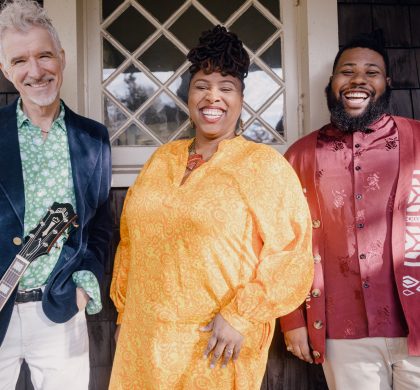Backstage at Wolf Trap’s Filene Center
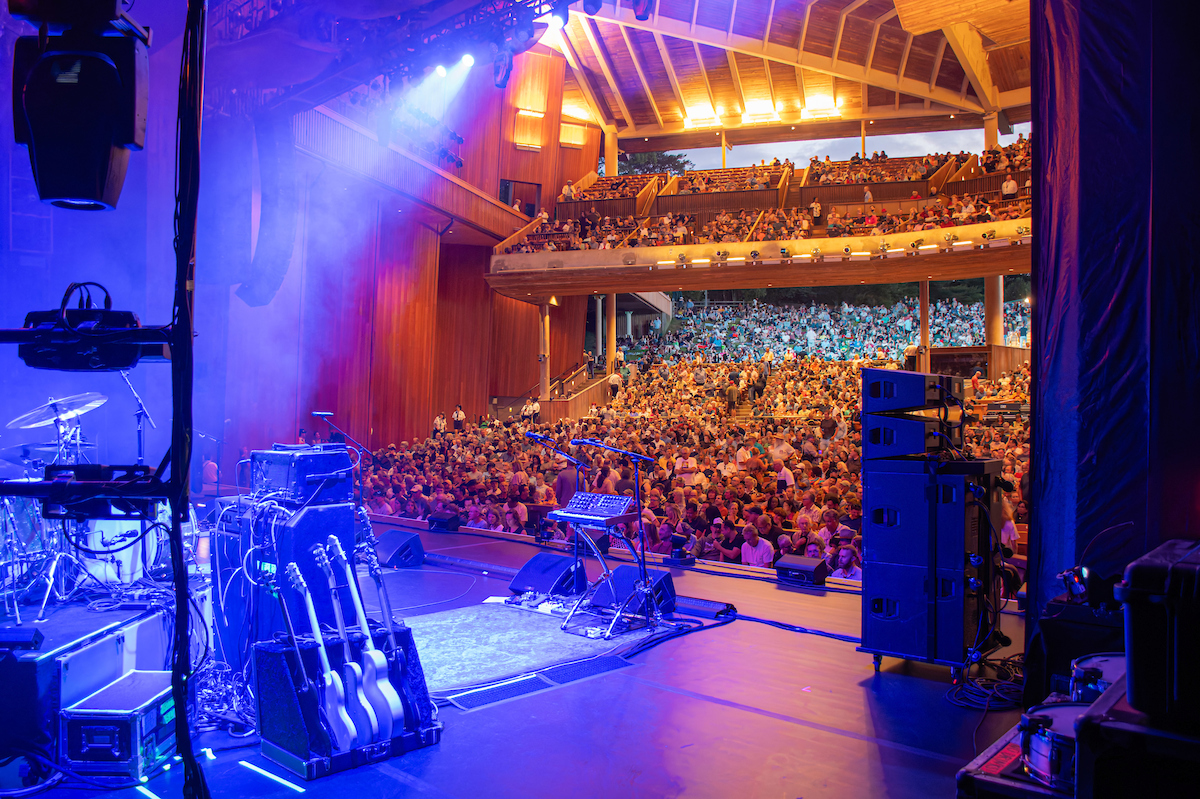
Jul 24, 2025
Nestled in an idyllic national park, Wolf Trap’s Filene Center is a beloved outdoor amphitheater, welcoming thousands of concert goers every summer. Beyond the audience view, you’ll find dazzling lights, hanging set pieces, miles of cable, and banks of speakers. From classical performances to bluegrass jamborees, every performance on Wolf Trap’s largest stage calls for a different combination of production elements to create the perfect show.
Who’s responsible for all the behind-the-scenes shapeshifting? Wolf Trap’s production team and house staff! To find out what it takes to get a show stage-ready from pre-season to performance time, Wolf Trap spoke with the Filene Center’s Director of Production, Ryan Haderlie.
Pre-Season Planning
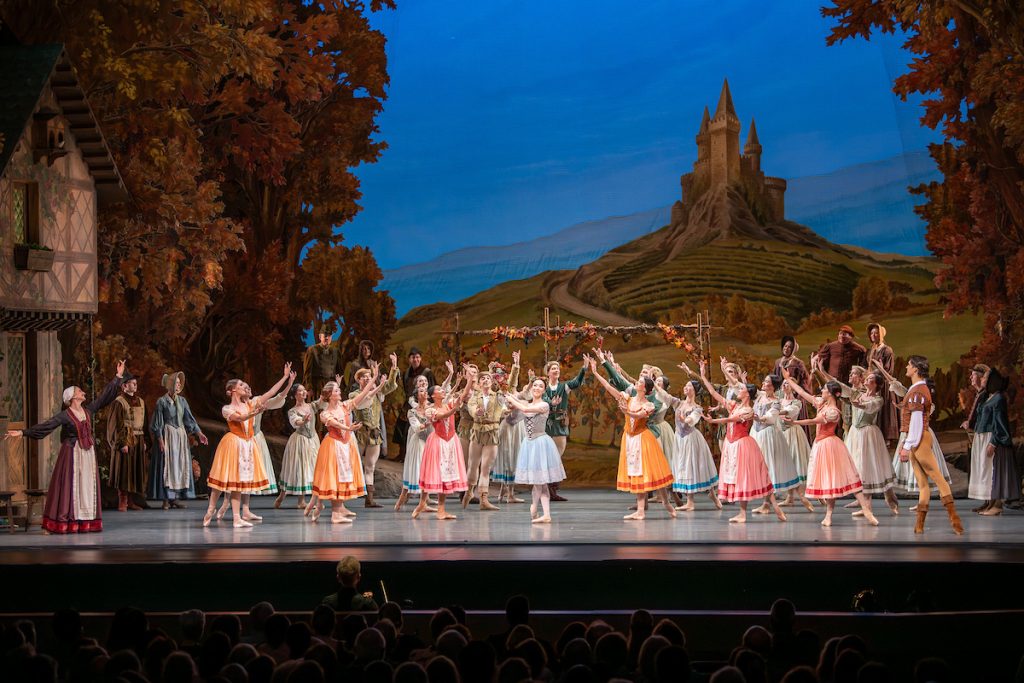
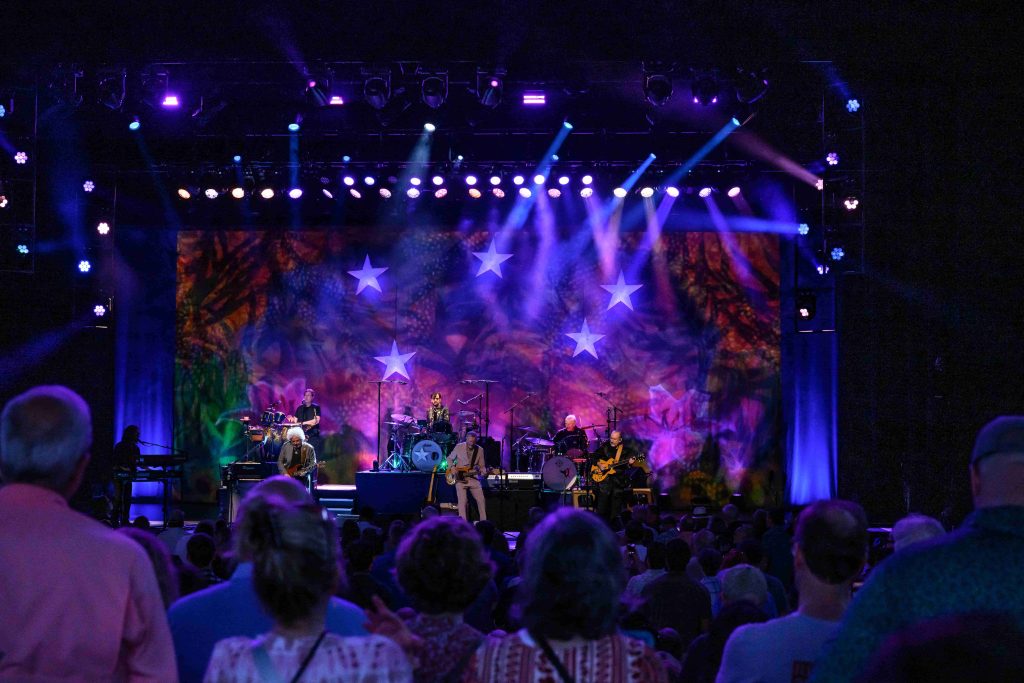
Every summer, Haderlie and the programming and production team plan for about 70 shows at the Filene Center. While some shows, like dance and classical programs, are scheduled years in advance, others are booked and announced just a few months before the performance. After booking, the team needs to nail down the logistics of staging the show.
Haderlie says, “There’s just about a million back and forth little item details that my production managers and I are dealing with, sometimes up to the morning of the show. If you go from the National Symphony Orchestra (NSO) loading in for a movie night versus a rock or pop show like Ringo Starr, it’s a completely different idea of what a show is. But, at the core of it, the processes we do remain the same.”
Whereas the NSO delivers performance details two to three months in advance, for most touring artists—such as Maren Morris or John Legend—the production team waits until about two weeks before showtime to begin planning. Everything from the artist’s equipment to the day’s timeline is discussed in a call with the artist’s management team, then with several follow-up emails to solidify further details.
Many Hands Make Light(er) Work
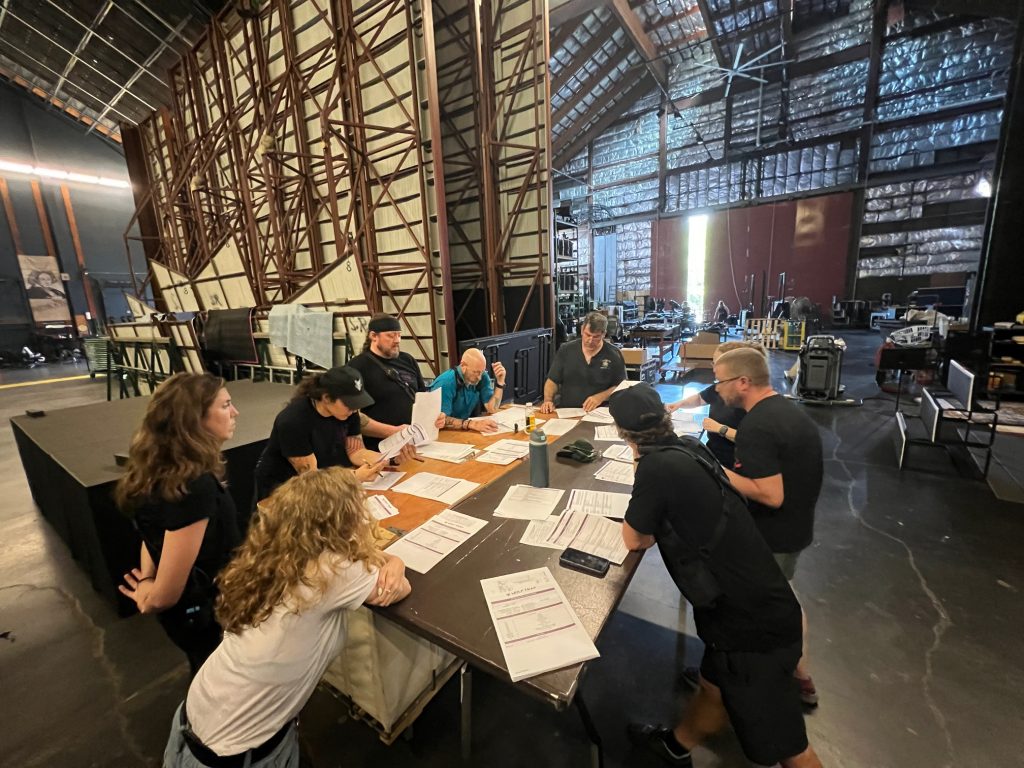
(Photo credit: Ryan Haderlie)
On a show day, the Filene Center’s staff arrives around 8 AM and stays until after midnight—sometimes until 1 or 2 AM—following load out. Then they come back the next morning to do it all again with a completely different show! Wolf Trap hires a core crew of 14 stagehands who serve as the house staff and work every show, up to five times a week.
Some of the stagehands’ duties include:
- Unloading and reloading gear from tractor-trailer-sized trucks
- Setting up audio and lighting equipment
- Mounting sets
- Creating or repairing pieces for touring artists in the backstage workshop area
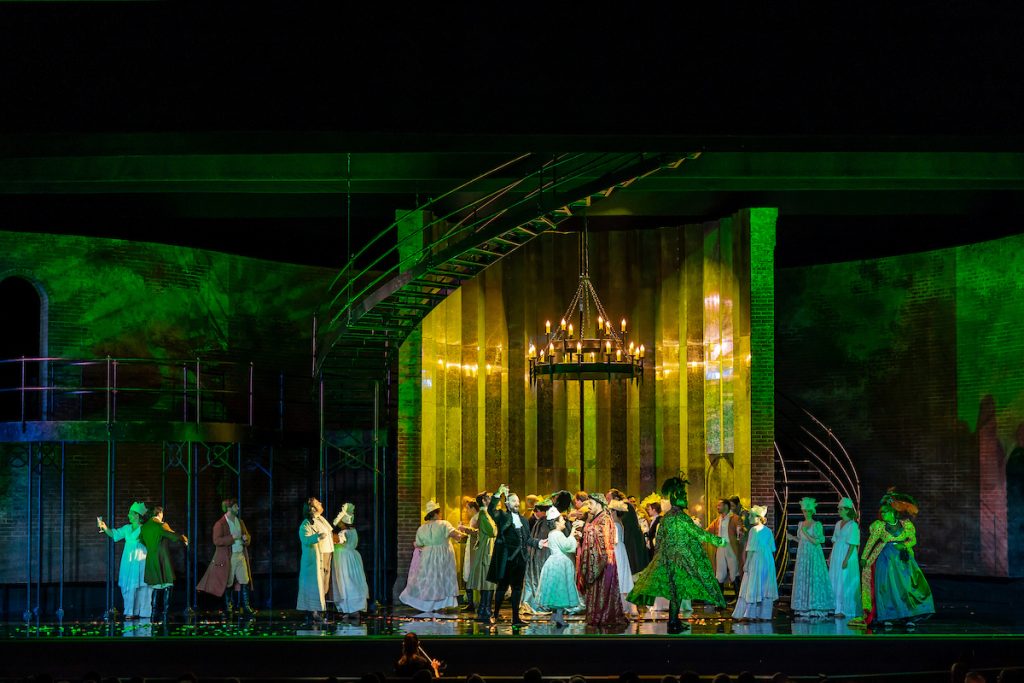
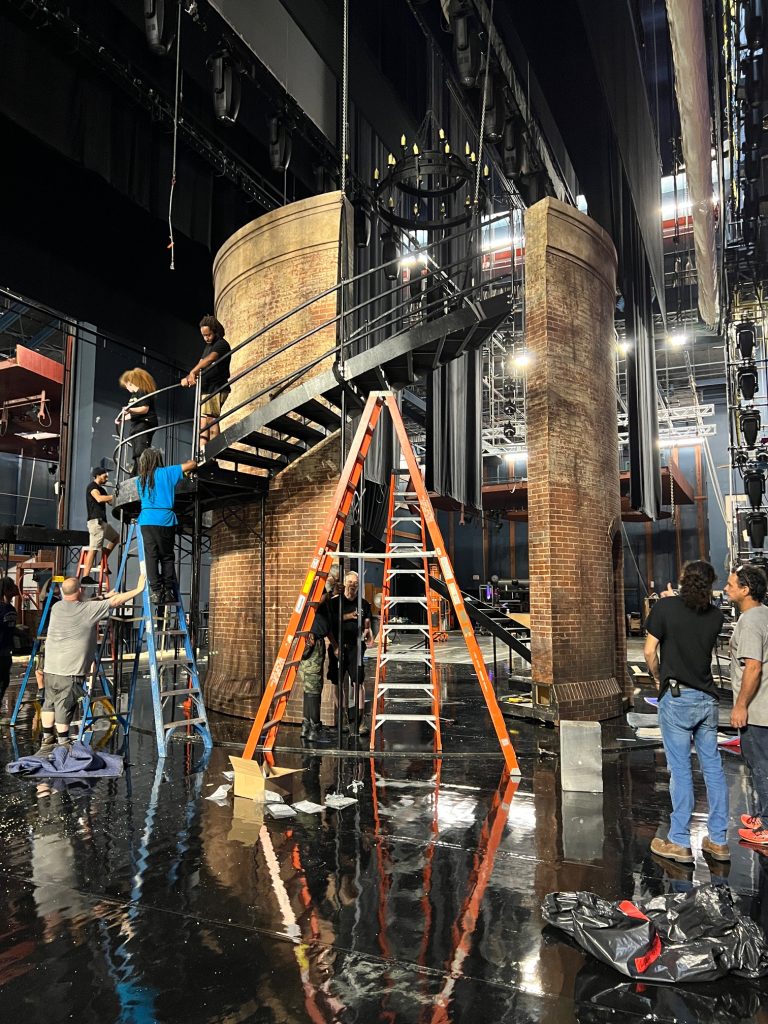
(Photo credit: Ryan Haderlie)
Even though the Filene Center is an outdoor venue, it operates just like an indoor theater. That means dance companies, like Côté Danse or American Ballet Theatre, can bring their full sets and, of course, it’s perfect for hosting Wolf Trap Opera’s large-scale productions every summer.
Haderlie explains, “The Filene Center has the benefit of it starting out as an opera house. We have a full working theater as opposed to a shed—an empty building with a big space that you put a show into. We have a walk over grid, line sets, and hanging hardware. That lends to putting on performances that a lot of other spaces would normally have to rent in or not have the capabilities to facilitate.”
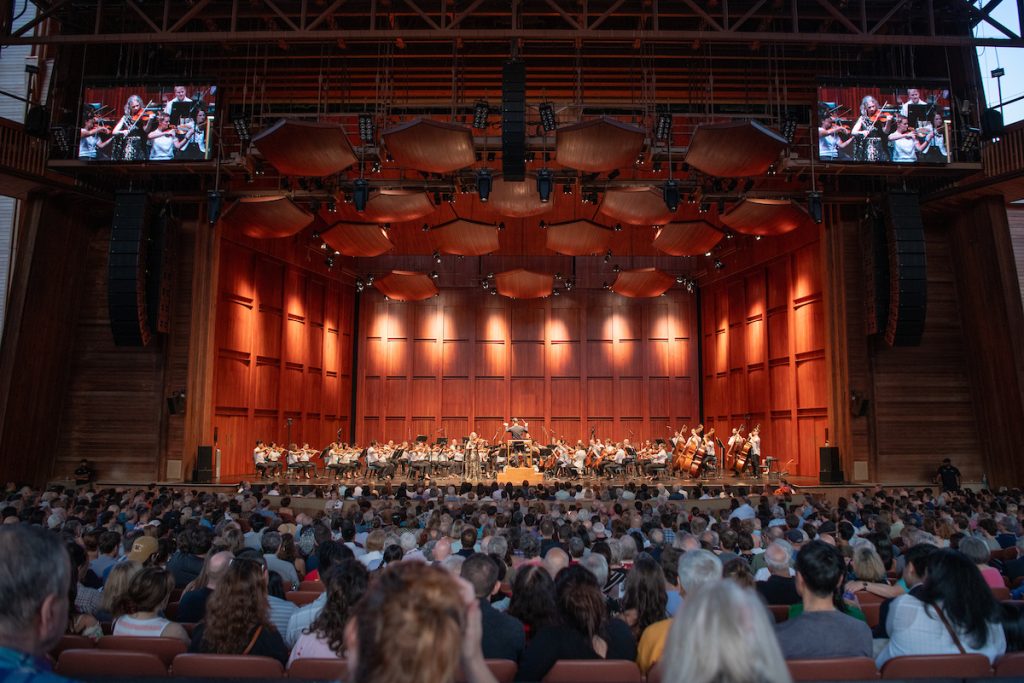
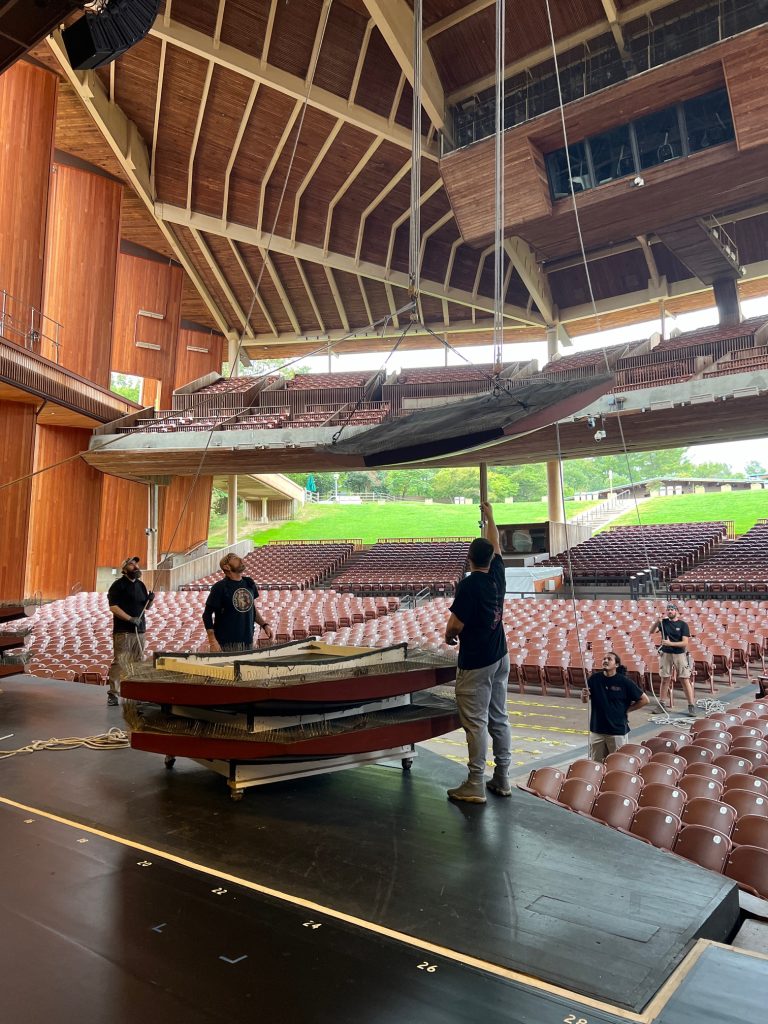
For NSO performances, the Orchestra Shell (the tall wooden sound panels above and around the stage) helps transform the Filene Center into a symphonic sanctuary. The individual pieces move on an air caster system with gliding mechanics that help float each unit just enough to reduce friction. This allows stagehands to move these pieces, sometimes weighing upward of 10,000 pounds, with ease. It can take 14 stagehands two hours to move the sound panels and shell into place! Once up, the panels help project the sound of the musicians into the seats and lawn.
Under the Stage Exclusives
Beyond stage setup, there’s even more happening under the Filene Center. Another key part of the production managers’ jobs is taking care of artists and their crews once on site. This can entail providing tasty meals curated to their dietary preferences and providing a welcoming space for everyone to relax in.
Wolf Trap Foundation overhauled the backstage areas in 2021 by upgrading the Reception Room, café, dressing rooms, and artists’ suites. Artists and their teams can decompress in the Lounge, which includes fun activities like ping pong, a pool table, and video games, and the Wellness Room, a customizable space for meditation, working out, or getting a massage. Artists can even request playtime with puppies from the local Wolf Trap Animal Rescue—a perk Kacey Musgraves loved before her 2019 show!
“We really work hard to ensure that artists and their crews are treated with respect, knowing they live on a bus for many weeks out of the year… We want to make them as comfortable as possible, and that goes a long way to building trust and relationships,” says Haderlie.
Haderlie shares that many of the artists have their own ways of expressing gratitude to the staff. In fact, Lyle Lovett makes a point to individually thank every person backstage who worked on the show.
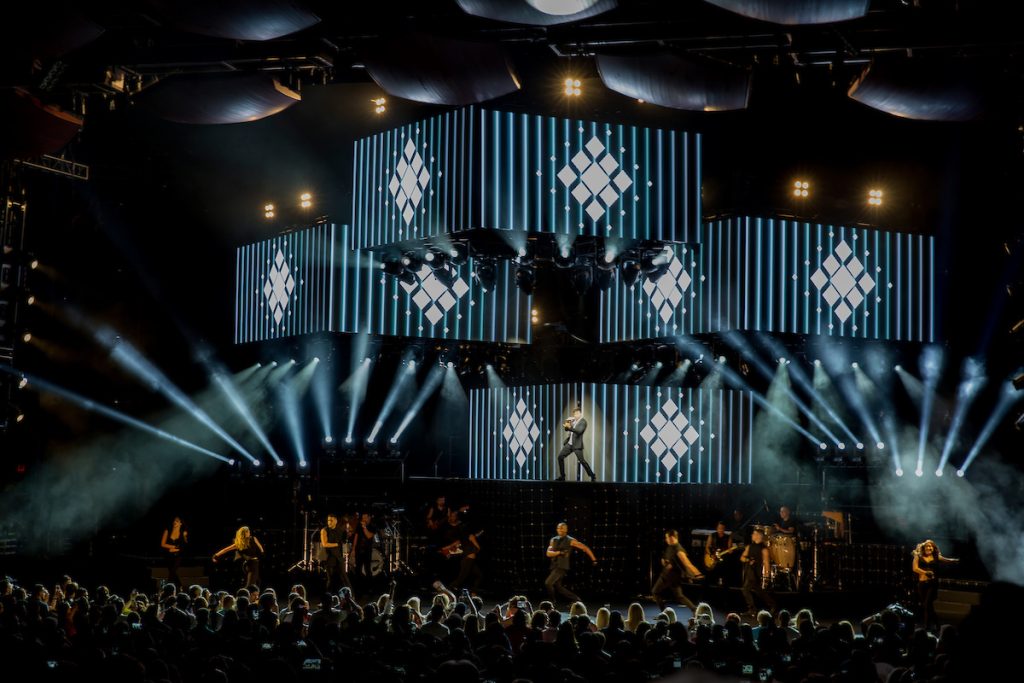
1. Meeting Ringo Starr and Dolly Parton for the first time
2. Greeting and sharing a hug with Lionel Richie backstage before a show
3. Setting up a larger-than-life show for Ricky Martin. According to Haderlie, “It was an arena-sized show that we were fitting into our amphitheater…and a lot of his production was already on a boat heading toward Spain… I think we had finally just tied and taped on the last thing to the set when the house opened.”
Gearing Up for Showtime!
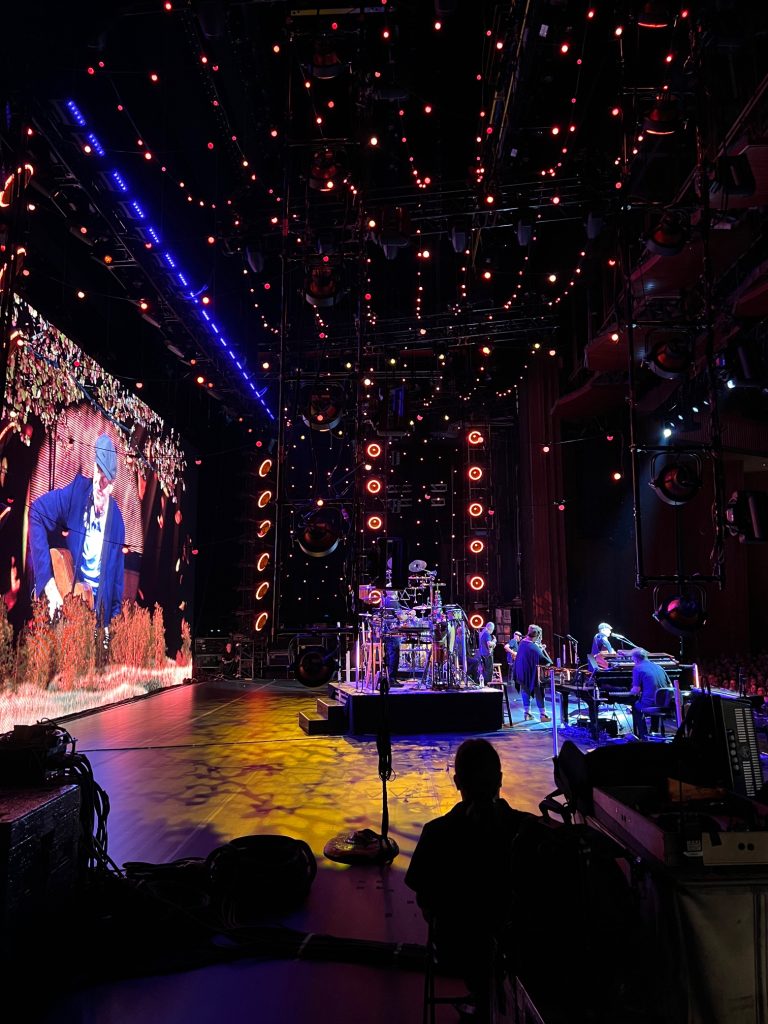
With the artists taken care of downstairs, the final pre-performance prep takes place in the Rehearsal Hall and Scene Dock, both located behind the main stage.
For shows with multiple acts, that means the stagehands can set up the headliner’s gear on the main stage and the opener’s equipment on the Scene Dock simultaneously, so everyone is ready to go by showtime. Meanwhile, artists can practice in the sound-proofed Rehearsal Hall behind that, which is the same size as the main stage.
According to Haderlie, “Once the headliner is done with soundcheck we turn the stage over and roll the opener’s equipment right onto the stage… We usually run through the sound check, make sure that they’re good to go, and then we start the show!”
Experience the Filene Center in action this summer and see the full lineup at wolftrap.org/calendar.
Recommended Posts

Tuned to Your Taste: A Foodie Guide for Your Upcoming Show
Aug 04, 2025 - Experience, Food, Summer
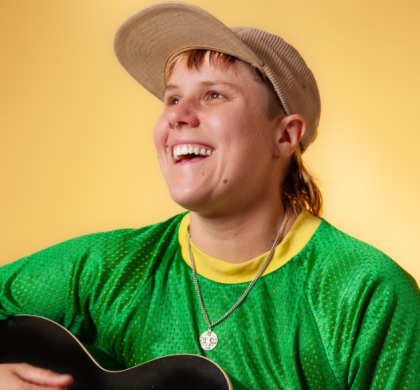
Jamming with Jules: Music for Kids of All Ages
Jul 21, 2025 - Education, Experience, For Kids, Institute, Summer

